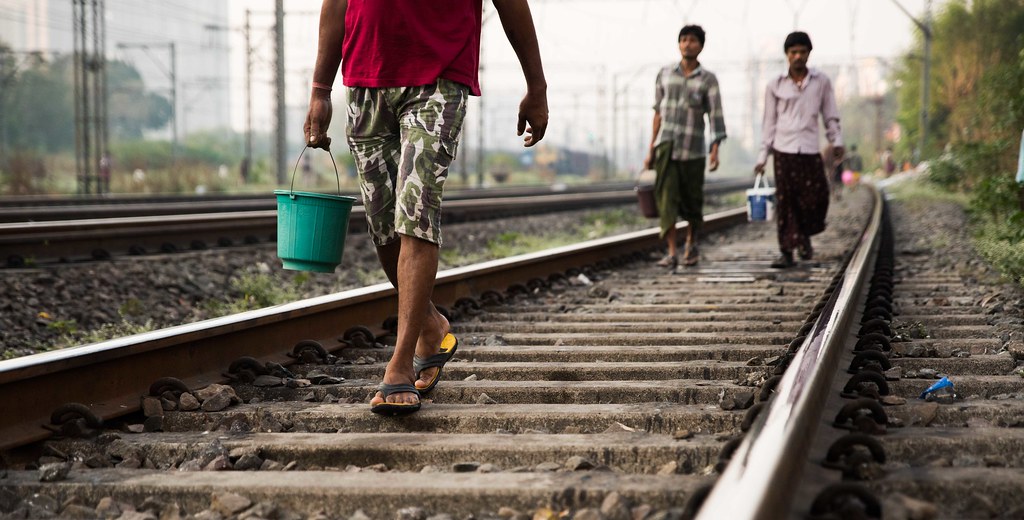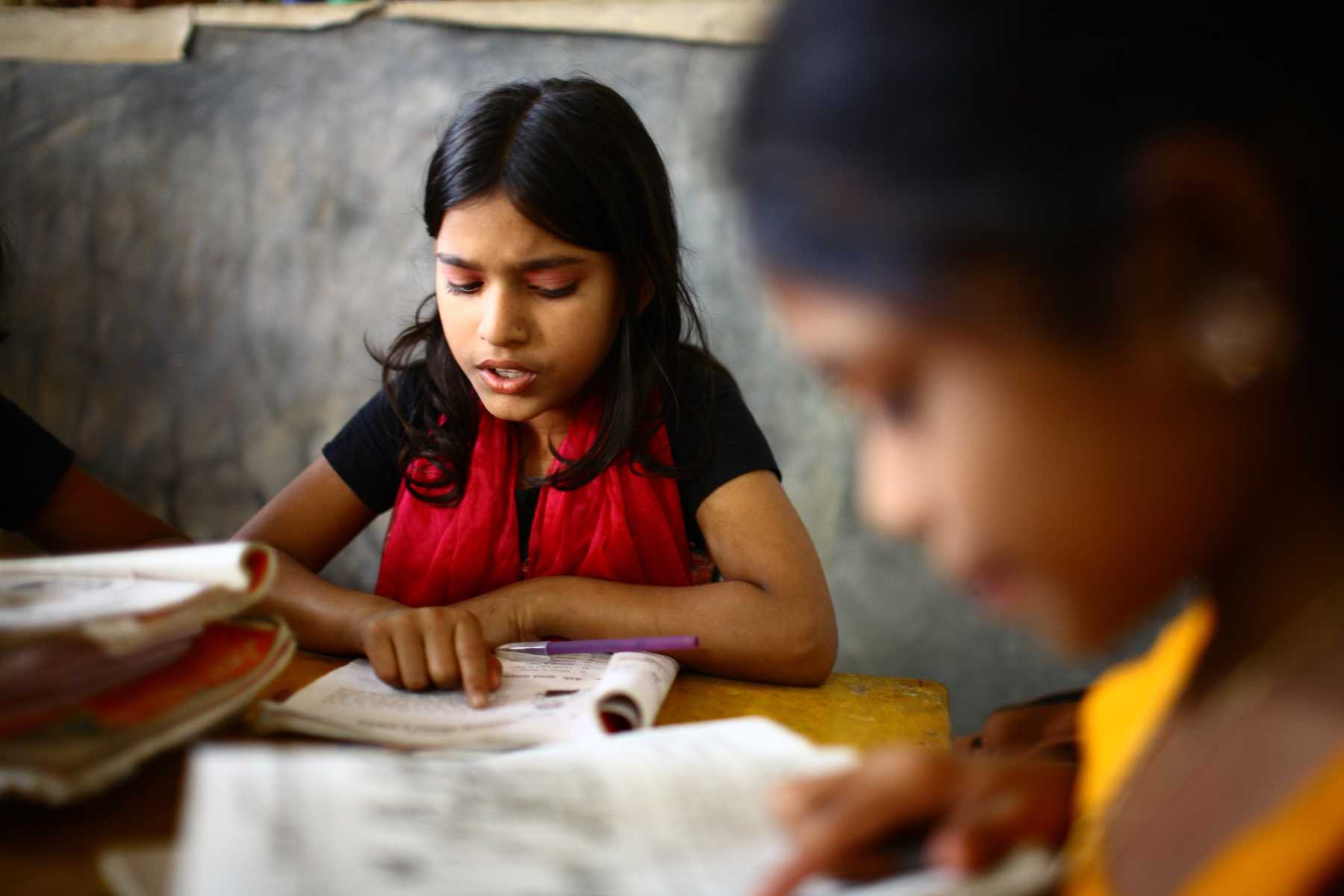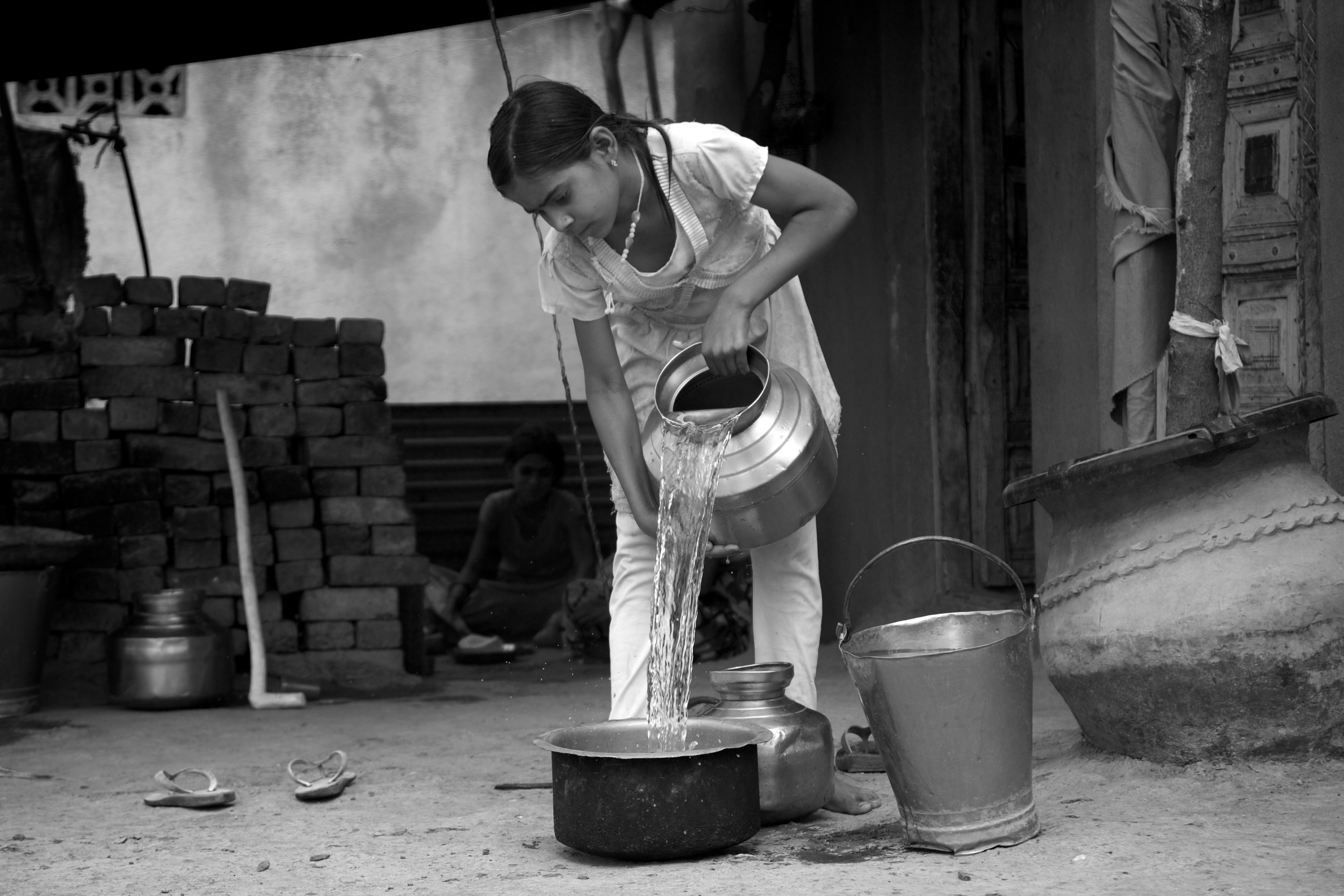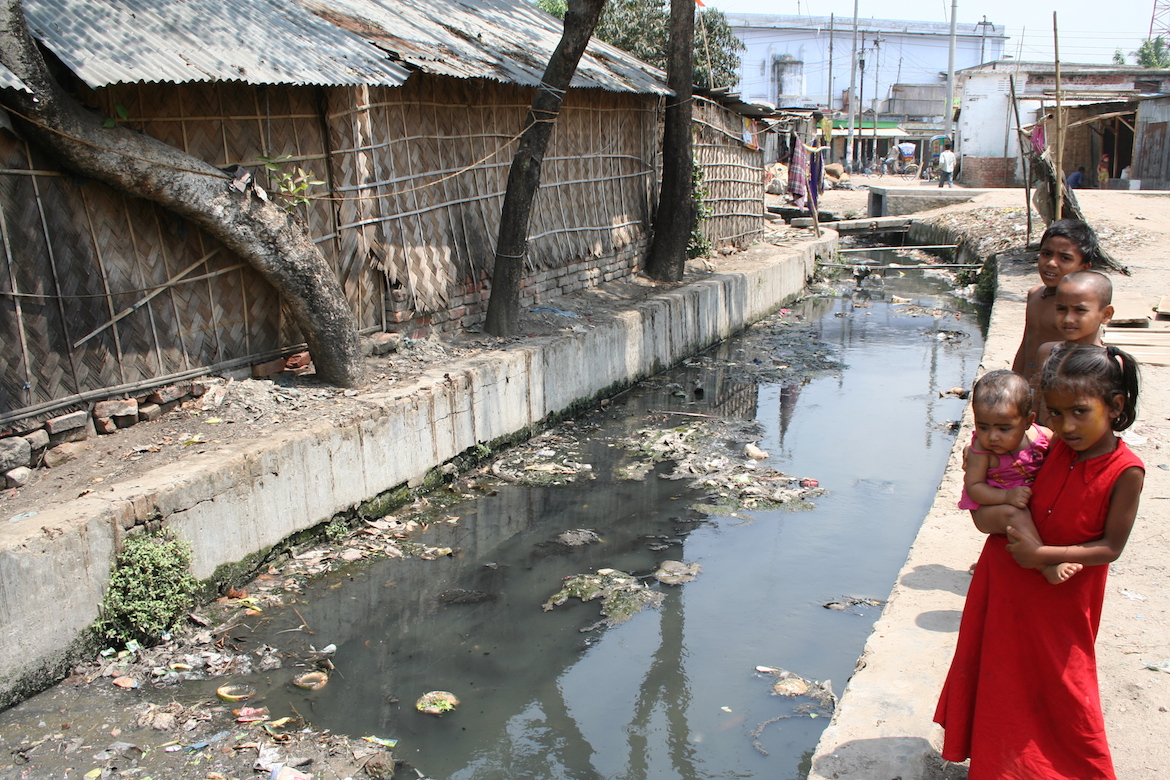Water has been an important resource in our fight against the COVID-19 pandemic. Without water, there is no hand washing—an effective measure to slow down the spread of the virus, in the absence of a vaccine. However, this simple act of washing hands using soap and clean water is beyond the reach of many who lack access to adequate water and sanitation services, particularly in urban, low-income communities.
According to a sero-surveillance study conducted by the Indian Council for Medical Research (ICMR), compared to rural areas, the risk of COVID-19 spreading in urban areas and urban informal settlements is 1.09 times and 1.89 times higher, respectively. Cities across India have responded by creating emergency water, sanitation, and hygiene (WASH) infrastructure and building awareness about the importance of good sanitation. For instance, cities in Maharashtra and Odisha have partnered with a number of development organisations to install no-contact hand washing stations in informal settlements and have been running communication campaigns on the importance of hand washing. The pandemic has exposed the vulnerability of marginalised urban populations to crises, and underscored the importance of building their capacity to respond to and recover from future shocks or stresses—a concept popularly known as resilience. Therefore, alongside short-term recovery measures, we need to start thinking about how to make cities more resilient in the longer-term, in line with Sustainable Development Goal 6 (ensuring availability and sustainable management of water and sanitation for all) and Goal 11 (making cities and human settlements inclusive, safe, resilient, and sustainable).
What does WASH resilience look like?
By its very definition, resilience is tied to disasters and their management. Typically, disaster management frameworks focus on moving from responding to the crisis in the short-term to medium-term recovery, and finally to mitigation and preparedness for future disasters in the long run.

The pandemic is unlike any other disaster we have seen before.
However, the pandemic is unlike any other disaster we have seen before, and has pushed us to rethink our understanding of disaster management. Usually, natural disasters such as earthquakes or floods have a definite beginning and end, and their impact is limited to certain geographical areas. The biological and open-ended nature of the pandemic means that this blueprint will not apply in the same way as before.
In particular, COVID-19 has made us acutely aware of the importance of WASH facilities in safeguarding against infectious diseases, while simultaneously exposing the inequalities and gaps in its provision. Sixty percent of slum residents rely on a shared source of water, and nearly 40 percent do not have access to both a toilet and a bathroom within their house. One of the most effective ways to address such inequalities (and consequently build resilience) is by universalising availability and access to basic water and sanitation for urban, low-income communities through investments in infrastructure. Though this has been a stated policy goal for a long time, we have seen limited progress on this front.

As we begin to move towards recovery and mitigation, here are three things that we need to keep in mind for improved WASH resilience:
1. Digitisation
During the pandemic, we have witnessed the role technology can play in the provision of relief services, mapping of higher risk zones, food delivery, and tracking and tracing the spread of the virus. Notwithstanding the digital divide, the pandemic has shown that cities that were better prepared with digital city management platforms—including ‘smart cities’ such as Pune and Surat—were more successful in managing emergency aid and pandemic control. This experience of the pandemic is expected to raise demand for use of digital tools in everyday management of cities going forward.
2. Decongestion
We have also seen an acceleration in the adoption of digital technologies, in the provision of urban WASH services in particular. In Mumbai, for instance, the state government came together with a number of different development partners to deploy digital tools to improve access to water and sanitation facilities. One way they did this was by working with Google to map garbage points, community toilets, and water points and tag them with barcodes. Creating such platforms before a crisis strikes would enable cities to be better prepared for them.

The urban poor often live in densely populated conditions. Mumbai, for instance is the world’s second-most densely populated city, with more than 20,000 people per square kilometre. Forty percent of its inhabitants live in informal settlements. High population density combined with inadequate infrastructure leads to unhygienic living conditions for a significant portion of the urban poor. This was further exaggerated during the pandemic when physical distancing and hand washing were among the only measures available to curtail the spread of the virus. Addressing this is essentially about increasing the supply of land and housing and creating stronger land and housing rights for urban, informal settlements.
The long-term focus on guaranteeing housing rights and access to basic services like water can help build resilience, as was seen in the case of Sri Lanka. Their COVID-19 response was led by the Urban Settlement Development Authority (USDA), which was set up to relocate urban underserved communities to affordable housing blocks and to improve their socioeconomic status. In eight settlements across the country, they reached out to more than 7,720 individuals to promote proper sanitation and hygiene practices, and precautionary measures. This reduced risk and helped mitigate the impact of the crisis in the short-term.
3. Decentralisation
In times of crisis, local leadership needs to take action, and decentralisation allows for this to happen. The experience of the pandemic has shown us that in order to effectively respond to crises at the city-level, we cannot rely solely on district-, state-, or national-level disaster mitigation plans. Had granular, ward-level plans been available, governments would have been better equipped to swiftly implement localised responses, such as containment zones or city-level lockdowns. Further, such an approach could have helped the government better manage the fallout of disasters, like the migrant crisis.
Decentralised infrastructure and service provision can also help build resilience.
Decentralised infrastructure and service provision can also help build resilience. In Dhaka, another densely populated South Asian city, nearly 40 percent of the population (around 3.5 million people) lives in informal housing. The Dhaka Water Supply and Sewerage Authority (DWASA) provides 24×7 legal, piped water supply to all areas in the city, including informal settlements.
Not only has this pro-people approach to water management been beneficial for the city’s citizens, it has also made DWASA bankable as a utility provider. The benefits of this continuous water supply were evident during the pandemic: DWASA leveraged its network to make water points for hand washing across the city and provide allied services such as soaps and sanitisers. Additionally, by working extensively on digitisation pre-pandemic, it had systems in place to ensure that the impact of COVID-19 was minimised on low-income settlements.
The government needs to prioritise WASH resilience
The role of national and state governments is critical in long-term resilience and preparedness. Recovery from a disaster needs to be financed at these levels of government so that the cost of recovery can be distributed more evenly. These costs cannot be borne by localised entities alone. For instance, if an earthquake were to occur in Latur, Maharashtra we cannot expect only Latur’s citizens to contribute to its reconstruction. The community will already be distressed and won’t be able to afford it.
National and state governments must ensure that local governments—where most of the pandemic control measures are at play—are adequately funded. As water and sanitation are managed locally, financial support and investments for the WASH sector should be aimed at creating infrastructure, such that every household has adequate access to WASH services, even during emergencies. The Government of India has launched the Jal Jeevan Mission to pursue this agenda at scale and this will go a long way to achieve WASH resilience. Learning from the experience of the pandemic, the mission needs to think about how it can prioritise WASH equity, especially in urban areas. It should also consider optimal use of resources and help cities create contingency and disaster management plans for WASH.
Local governments and communities are the primary stakeholders in WASH resilience. Ward-level plans can help identify areas that are more prone to risk, what kinds of risk, and develop strategies and emergency plans for overcoming them, in case of disasters (including epidemics and pandemics). The ongoing crisis has forced many communities to implement measures of tracing, tracking, quarantining, as well as providing drinking water, distributing food, and improving sanitation management. Based on the analysis of these, ward-level plans should be drafted to make sure that the learnings from this crisis help us prepare better for such future events, which will make the governance system more resilient. Additionally, platforms for collaborations around emergencies can be set up and protocols for action can be developed in advance, so that relief is provided immediately in the case of a future disaster.
The question of why basic services such as water and sanitation are missing is closely related to land and housing rights.
Given the prolonged nature of the current crisis, there is an opportunity for the government to rethink equitable access to water and sanitation. This would mean prioritising larger investments towards water equity and ensuring basic services across low-income settlements. The question of why basic services such as water and sanitation are missing is closely related to land and housing rights. Clear land tenure—the rights of communities to manage (own and use) the land that they reside on—is a key criterion to access WASH services in cities. The absence of this often leads to the exclusion of informal settlements and the urban poor. Though these problems are not easy to solve, it is where much of the effort has to be directed by the government, above and beyond the simpler, short-term measures that are being implemented.
The pandemic has made us realise that existing WASH infrastructure is not designed to respond to major emergencies. Going forward, we need to renew our focus on ensuring sustainable access to water, particularly for the most vulnerable in cities, in order to build resilience and protect them from future crises.
—
Know more
- Watch this webinar to learn more about inclusive policies and practices for improved urban resilience.
- Learn more about the Policy Labs on Urban Poor Communities and COVID-19 —a series featuring case studies that offer insights into innovative and successful approaches to improve WASH for urban poor communities across South Asia.
- Read about how land rights can play an important role in ensuring access to WASH services among urban informal settlements in Mumbai.
Do more
- To collaborate with the author or the Scaling City Institutions for India programme, write to shubhagato@cprindia.org or sci-fi@cprindia.org.




